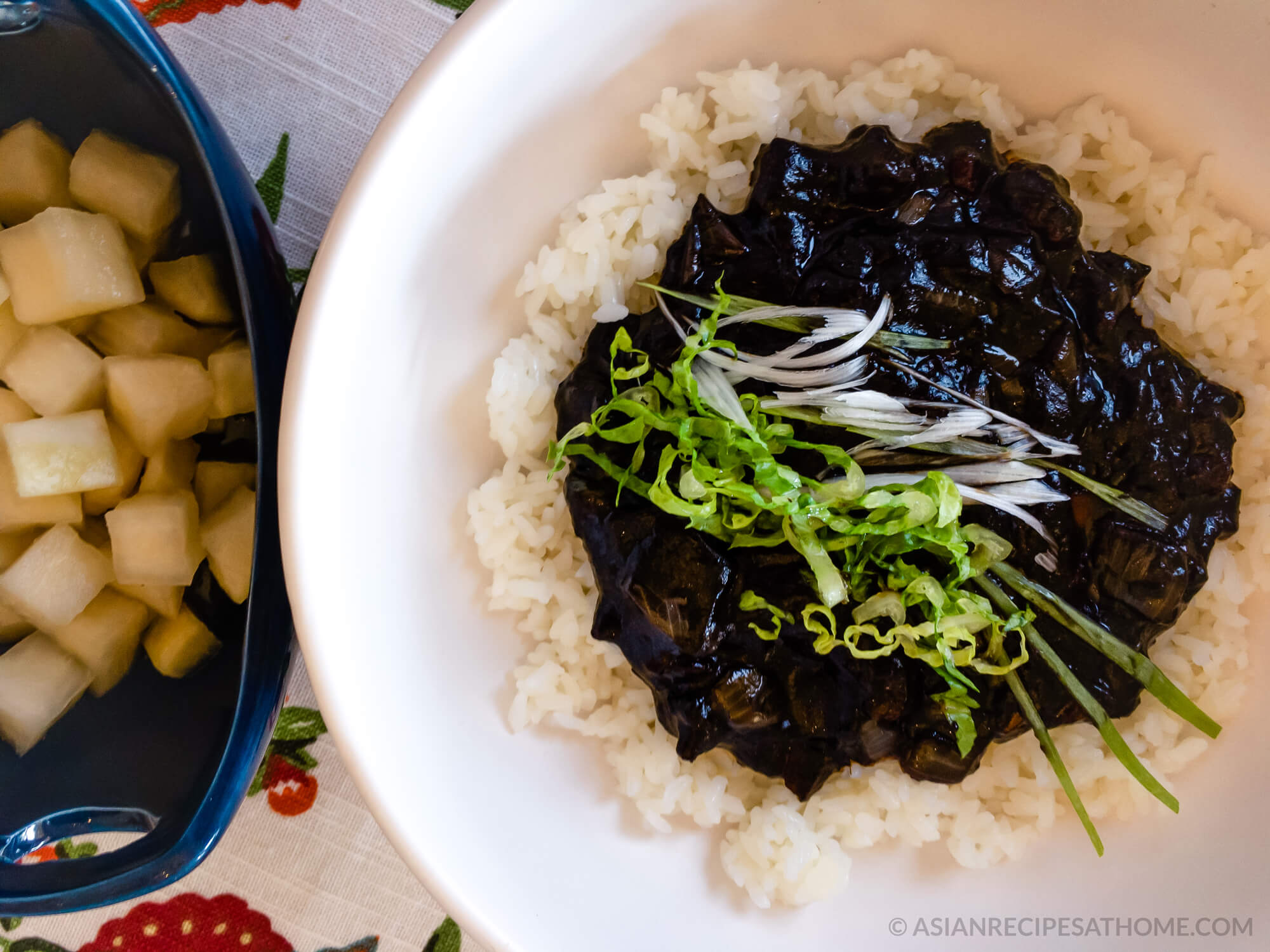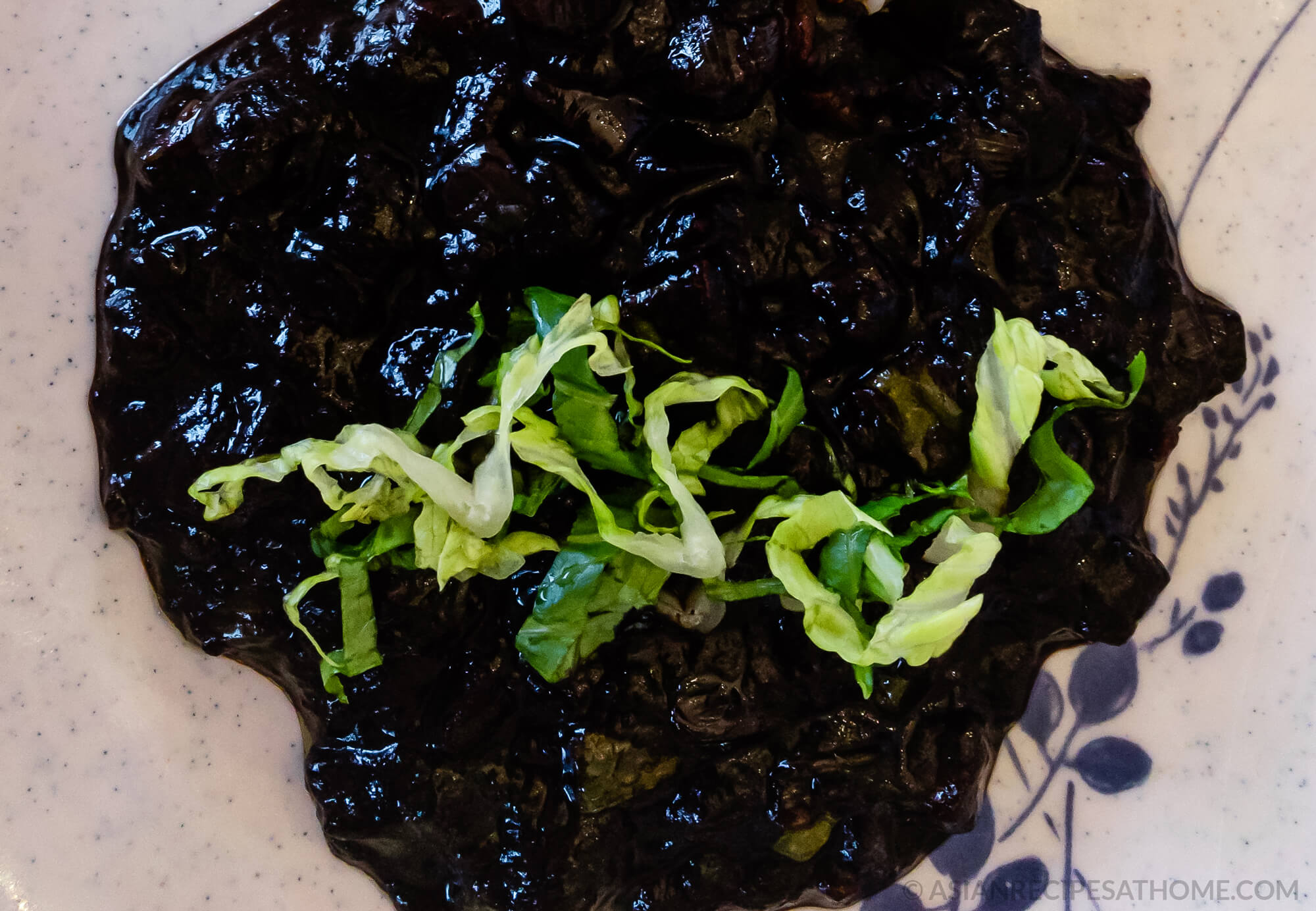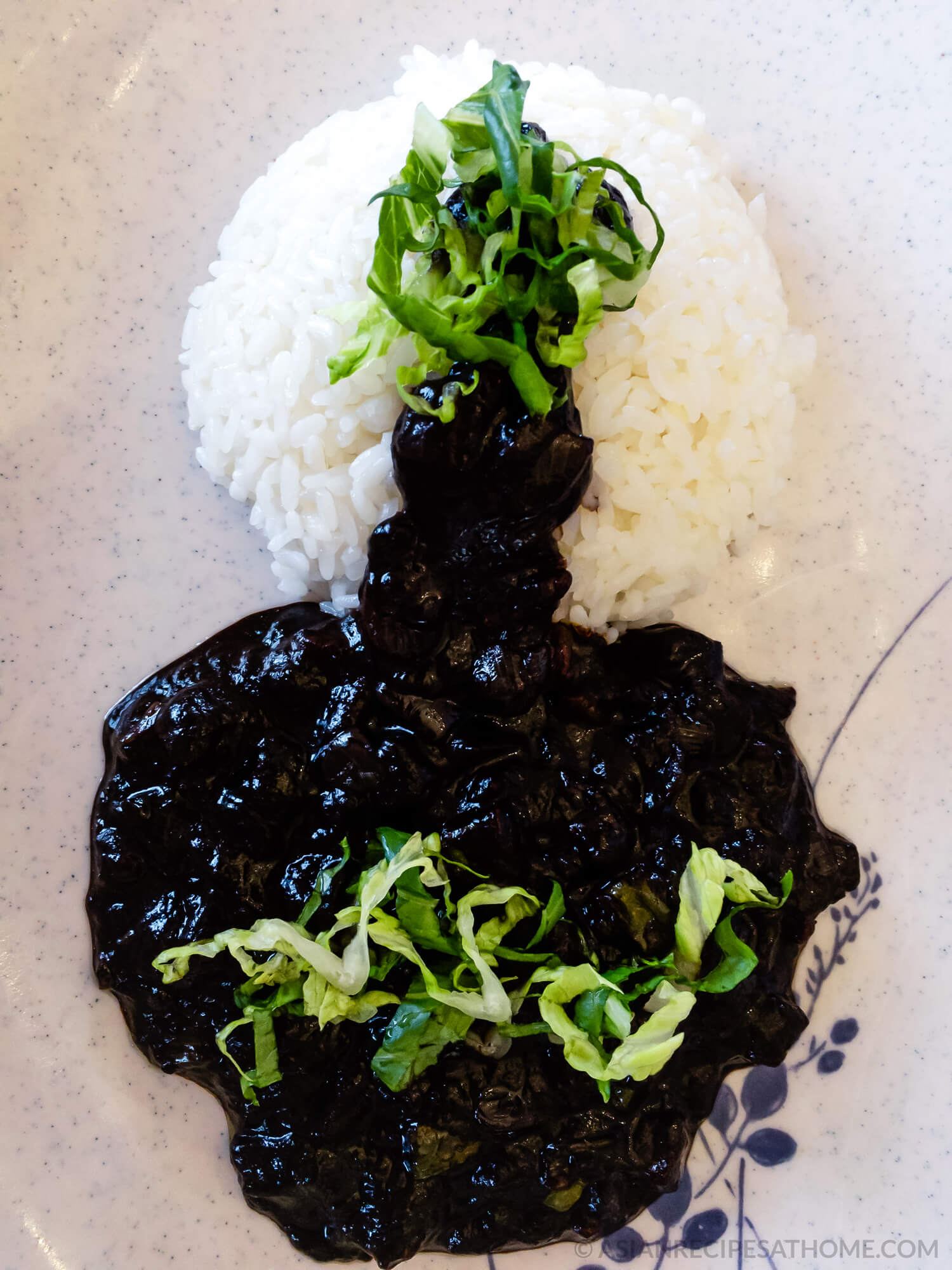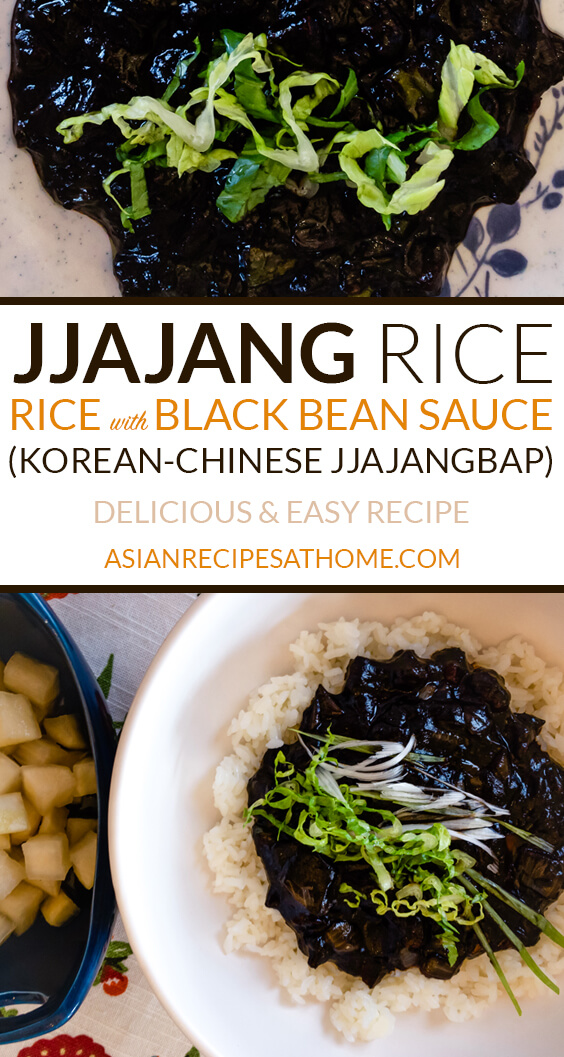Make this Korean-Chinese rice with black bean sauce (jjajangbap 짜장밥) with our simple recipe. Delicious black bean sauce and rice in one dish for a comforting meal at any time of the year!
Jjajangbap versus jjajangmyeon
You have probably heard of jjajangmyeon before. Jjangmyeon consists of black bean sauce with noodles and is a very popular Korean-Chinese dish. Today, however, we are sharing with you jjajangbap which is basically identical to jjajangmyeon except for one little difference. The only difference between the two is that jjajangmyeon is served with noodles, and jjajangbap is served with rice.
If you rather have noodles with the jjajang sauce we’re making in this recipe, simply pour this black bean sauce over Korean fresh noodles (vermicelle) instead of rice. You’ll be able to find these noodles in a Korean grocery store in the frozen aisle. Simply thaw the noodles out when you’re ready to use them.
Black bean paste
Black bean paste (chunjang 춘장) is black, fermented, salty and slightly sweet from the caramel. It has a beautiful dark color that is usually made of water, wheat flour, caramel, soybean powder, salt, and a few other ingredients. You can buy black bean paste from Asian markets or Korean grocery stores. Make sure to store it in the refrigerator after opening.
Due to the black color of the black bean paste used to make this recipe, we recommend not wearing white or light-colored clothes when making this dish or eating it. Fair warning. If you do, make sure you have napkins and a Tide stain pen handy just in case.
What to serve with rice with black bean sauce (jjajangbap)
Traditionally, you’ll always see rice with black bean sauce (jjajangbap) served with Korean pickled radish. Korean pickled radish has a salty, sweet and sour flavor. It also has a really nice crunch which contrasts nicely with the texture of the jjajangbap. You can find Korean pickled radish at most Korean grocery stores. The Korean pickled radish will probably be in ready to purchase jars near the jarred kimchi in the refrigerated section.
You can also serve jjajangbap with a variety of side dishes (banchan). If you want to add a few more side dishes to your meal, check out some of our other recipes:
- Easy Napa Cabbage Korean Kimchi – Cut-Up Kimchi
- Korean White Kimchi (Baek Kimchi)
- Crunchy Fried Spring Rolls
- Spicy Korean Cucumber Salad
And don’t forget to get creative with the plating of this dish. The contrast of the colors in this dish is beautiful and you can really have fun with plating this dish.
We hope you enjoy our delicious Jjajang Rice – Rice with Black Bean Sauce (Jjajangbap 짜장밥) recipe!
HUNGRY FOR MORE? Subscribe to our newsletter and follow along on Facebook, Pinterest, Twitter, and Instagram for all of the latest updates.
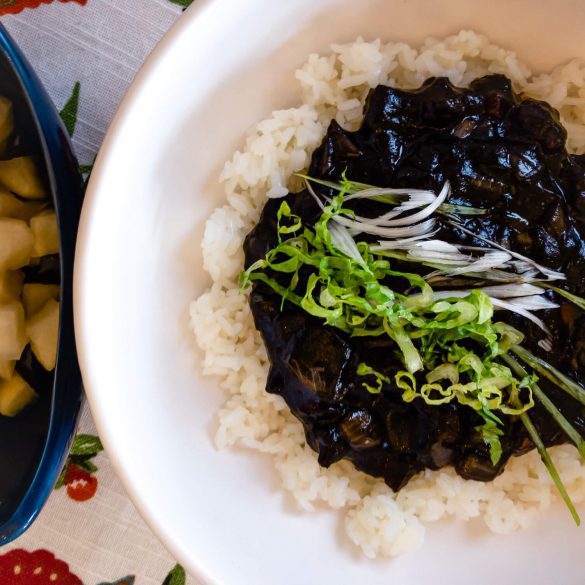
Ingredients
½ lb fresh pork belly, diced ¼” size
1 medium-sized zucchini (about 1 cup), diced ½” size
1 medium yellow onion (about 1 cup), diced ½” size
2 Tbsp Chunjang paste (fermented black bean paste)
1 Tbsp potato starch
1 Tbsp white sugar
2 Tbsp olive oil
2 cups water
2 cups cooked white rice
1 green onion, chopped (optional, for garnish)
2 Tbsp romaine lettuce, thinly sliced (optional, for garnish)
Instructions
- Mix the potato starch with about 2 Tbsp of cold water in a small bowl. Set aside for later.
- Put a large-sized frying pan or wok on medium-high heat. Add in a tablespoon of olive oil. Once the pan is hot, add in the pork belly to the pan and stir-fry until well done (about 5 minutes). Remove fully cooked pork belly onto a plate and set aside for later.
- In the same pan, add in another tablespoon of olive oil and turn up the heat to high. Add in the onion and stir-fry for about 3 minutes. Next, add in the zucchini to the pan with the onions. Cook for another minute.
- Add the pork belly back to the frying pan with the vegetables. Add in the jjajang paste and stir well for about a minute. Next, add in the water and let it come to a boil. Once it comes to a boil, add in the sugar and mix in well.
- Turn down the heat to low. Slowly add in the potato starch/water mixture and continue to stir the jjajang sauce well to incorporate the potato starch. The jjajang sauce should start to thicken up. Once it’s thickened to your liking, remove from heat and turn off the stove.
- Serving tips: Place a serving of warm white rice in a bowl/plate, and pour a scoop of the jjajang sauce on top or on the side. Garnish with green onion and sliced romaine lettuce (optional). Enjoy!
We love seeing your creations from our recipes! Tag us on Instagram at @AsianRecipesAtHome.
Disclaimer: Under no circumstances shall this website and the author(s) be responsible for any loss or damages resulting from the reliance of the given nutritional information or ingredient/product recommendations. Recommended ingredients/products can change their formula at any time without this website and author’s awareness. It is your responsibility (the reader’s) to check the label/ingredients of any product prior to purchasing and/or using. We greatly appreciate your support and understanding.
